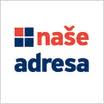At the very moment that a promising experiment in hyperlocal journalism in the Czech Republic seemed set to spread all over the country, the original investors have sold the company and the small town papers and websites are to be shut.
Best version of the story is at Editorsweblog. Some background from this blog here.
What was unusual about the Nase Adresa (literally “our address”) network was not that it did hyperlocal startups. There  are, happily, thousands of those all over the world – although they remain relatively rare in central Europe. The x-factor in Nase Adresa’s recipe was the unusual balance between local and national.
are, happily, thousands of those all over the world – although they remain relatively rare in central Europe. The x-factor in Nase Adresa’s recipe was the unusual balance between local and national.
The little news rooms, located in coffee shops, generated most of the material for printed weeklies and websites in communities of usually between 10,000 and 30,000 people. But they were not on their own. The company, PPF, had invested in and raised sponsorship for a “Futuroom” in Prague to which the local reporters could turn for help.




